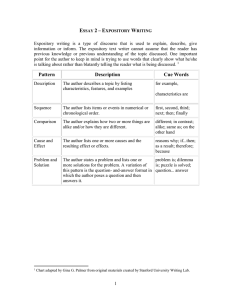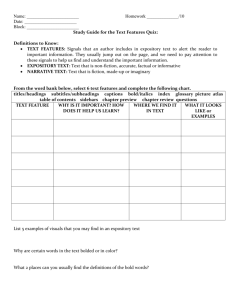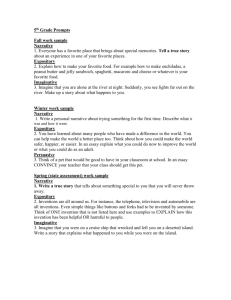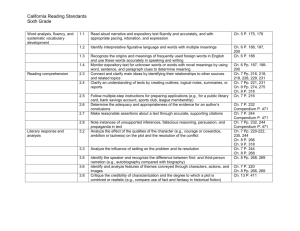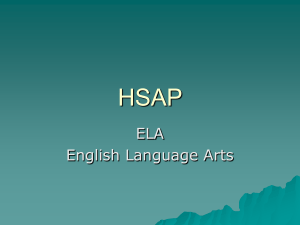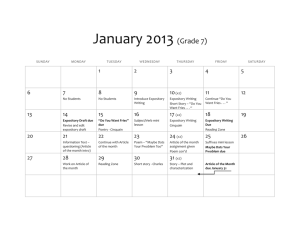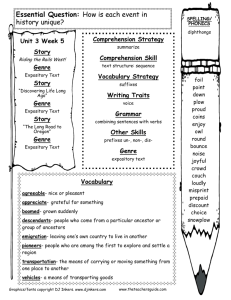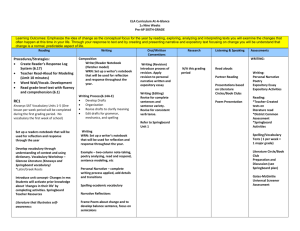expository and narrative writing handout - te401-fs10
advertisement
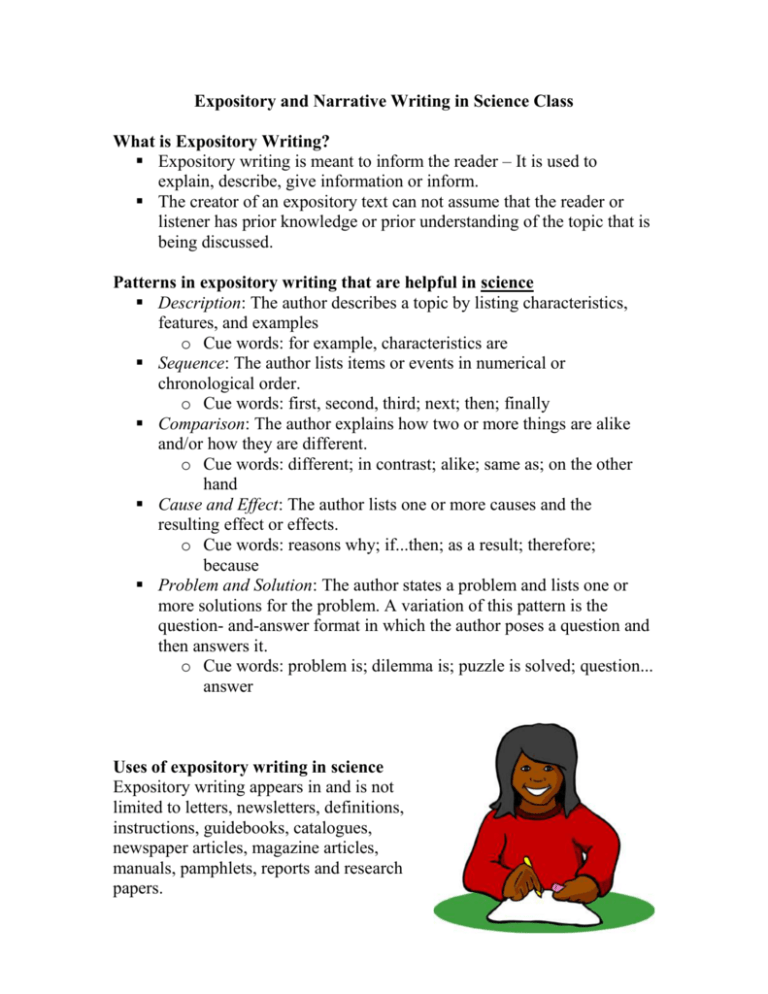
Expository and Narrative Writing in Science Class What is Expository Writing? Expository writing is meant to inform the reader – It is used to explain, describe, give information or inform. The creator of an expository text can not assume that the reader or listener has prior knowledge or prior understanding of the topic that is being discussed. Patterns in expository writing that are helpful in science Description: The author describes a topic by listing characteristics, features, and examples o Cue words: for example, characteristics are Sequence: The author lists items or events in numerical or chronological order. o Cue words: first, second, third; next; then; finally Comparison: The author explains how two or more things are alike and/or how they are different. o Cue words: different; in contrast; alike; same as; on the other hand Cause and Effect: The author lists one or more causes and the resulting effect or effects. o Cue words: reasons why; if...then; as a result; therefore; because Problem and Solution: The author states a problem and lists one or more solutions for the problem. A variation of this pattern is the question- and-answer format in which the author poses a question and then answers it. o Cue words: problem is; dilemma is; puzzle is solved; question... answer Uses of expository writing in science Expository writing appears in and is not limited to letters, newsletters, definitions, instructions, guidebooks, catalogues, newspaper articles, magazine articles, manuals, pamphlets, reports and research papers. What is Narrative Writing? Tells a story or part of story Characteristics of narrative writing in science Developing plot, character and setting using specific detail and ordering events clearly using chronological order. Told from a defined point of view, often the author's, so there is feeling as well as specific and often sensory details provided to get the reader involved in the elements and sequence of the story. Makes a point and that point is often defined in the opening sentence, but can also be found as the last sentence in the opening paragraph. Is filled with precise detail Uses vivid verbs and modifiers, uses conflict and sequence as does any story, and may use dialogue Uses of narrative writing in science Children's literature such as Goldilocks and the Three Bears, Porker's Taxi, The Hungry Caterpillar and Who Sank the Boat provide excellent platforms and springboards for science. Each of these stories include common misconceptions or interesting problems about thermodynamics, work and energy, life cycles, and buoyancy concepts embedded in a natural context for children. Also, by asking students to write about science in narrative format for popular audiences, teachers can illuminate the social and cultural aspects of science that are often lost in the complex prose of scientists writing to their peers.
